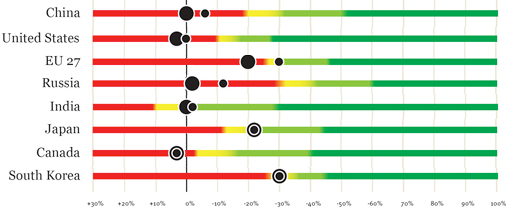by congress planning committee member Joanna Herlihy:
 The second session of the Climate Emergency congress was even livelier that the first. Delegates found that prioritization of their recommendations had not progressed much beyond the ‘laundry list’ categorization of the ‘Draft Recommendations’ issued a few weeks earlier. Apparently this was partly due to technical and organization problems with incorporating responses to the online survey, most of which came in during the last few days.
The second session of the Climate Emergency congress was even livelier that the first. Delegates found that prioritization of their recommendations had not progressed much beyond the ‘laundry list’ categorization of the ‘Draft Recommendations’ issued a few weeks earlier. Apparently this was partly due to technical and organization problems with incorporating responses to the online survey, most of which came in during the last few days.
The version of the recommendations presented to the second session included a new proposal advanced by the drafting group to encapsulate suggestions to set up provisions for ensuring citizen participation in and adequate city staffing for follow-up on the recommendations.
The next breakout into small groups was self-organized by delegates according to ‘open space’ principles, grouping according to areas of interest, which resulted in several potential task forces that intend to continue working in the areas of environmental justice, education, building energy efficiency, and urban forestry. Discussions on goal-setting and how best to coordinate city-community initiatives would have been useful but did not occur.
The finale, which extended an hour overtime, focused on whether the congress should endorse some broad principles or recommend formation of a City Manager-appointed committee of citizens to promote and coordinate response to the climate emergency. In the general discussion, observations ranged from “the city already has such a committee with almost the same mission” (Climate Protection Action Committee) to “such citizen groups function better independently of the city government”.
The facilitator’s suggestion that the option of a citizen committee be voted on without specifying who would appoint it was rejected. An intriguing new suggestion was advanced during the discussion: add authority over a ‘carbon budget’ to the duties of the city council-appointed City Auditor. The congress finally agreed to reconvene for a third session, probably in March, to vote on some well organized recommendations in printed form to strengthen local climate protection efforts.
 From last week’s Wall Street Journal comes news that despite the best of intentions from the local government and residents of Boulder, CO significant energy savings are yet to be realized.
From last week’s Wall Street Journal comes news that despite the best of intentions from the local government and residents of Boulder, CO significant energy savings are yet to be realized.






 From a record-breaking freeze threating an entire crop of citrus in Florida to significant snowfall in England, many are wondering just how “real” global warming actually is…considering how cold it’s been lately. To set the record straight, let’s begin by using the term “climate change” instead of “global warming.” While indeed the Earth’s core temperature is rising at an alarming rate, what that temperature rise actually does is shift the various ecosystem temperatures on Earth either up or down; it doesn’t necessarily mean temperatures will be high everywhere, but that the climate will, in fact, change drastically in one way or another. Some previous Ice Ages, for example, were triggered by changes in ocean currents and surface water temperature due to cold, fresh water from the melting polar ice caps disrupting major ocean currents.
From a record-breaking freeze threating an entire crop of citrus in Florida to significant snowfall in England, many are wondering just how “real” global warming actually is…considering how cold it’s been lately. To set the record straight, let’s begin by using the term “climate change” instead of “global warming.” While indeed the Earth’s core temperature is rising at an alarming rate, what that temperature rise actually does is shift the various ecosystem temperatures on Earth either up or down; it doesn’t necessarily mean temperatures will be high everywhere, but that the climate will, in fact, change drastically in one way or another. Some previous Ice Ages, for example, were triggered by changes in ocean currents and surface water temperature due to cold, fresh water from the melting polar ice caps disrupting major ocean currents. 